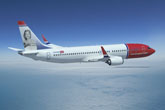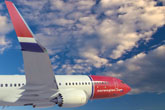Demand spurs need for over 28,000 aircraft in the next 20 years
Over 10,000 passenger jets to be replaced by newer fuel efficient models
Airbus’ latest Global Market Forecast (GMF) identifies a need for some 28,200 passenger and freighter aircraft (of 100 seats or more) between 2012 and 2031 worth nearly US$4.0 trillion, reconfirming an upward trend in the pace of new aircraft deliveries. Of these over 27,350 will be passenger aircraft valued at US$ 3.7 trillion.
Passenger traffic will grow at an average annual rate of 4.7 percent in the next 20 years, during which some 10,350 aircraft will be replaced by new efficient models. By 2031 the world’s passenger fleet will have expanded by 110 percent from slightly over 15,550 today to over 32,550. In the same period, the world’s freighter fleet will almost double from 1,600 to 3,000 aircraft.
Emerging economic regions will represent more than half of all traffic growth in the next 20 years. Increasing urbanisation and the doubling of the world’s middle classes to five billion people is also driving growth. By 2031 mega cities will more than double to 92 and over 90 percent of the world’s traffic will be between or through these points.
“Aside from growth in international traffic, by 2031 four of the world’s biggest traffic flows will all be domestic – US, China, Intra Western Europe and India – and these account for a third of world traffic,” says John Leahy, Airbus Chief Operating Officer Customers. “In 20 years from now, China’s domestic passenger traffic will overtake the US domestic traffic to become the number one traffic flow in our forecast. Aviation is not just essential for international commerce, but also for domestic economies too.”
Asia Pacific will account for 35 percent of all new aircraft deliveries, followed by Europe and North America with 21 percent each. In value terms, the single biggest market is China followed by the US, UAE and India.
Over 1,700 Very Large Aircraft (VLA – 400 seats and above) like the A380 will have been delivered by 2031, valued at US$600 billion. Of these over 1,330 are passenger aircraft valued at some US$500 billion (13 percent by value of passenger deliveries, 5 percent of units). Asia Pacific leads demand (46 percent) for these high capacity aircraft, followed by the Middle East (23 percent) and Europe (19 percent).
Demand for twin-aisle aircraft (250 to 400 seats), like the A330 and the A350 XWB, some 6,970 new passenger and freighter aircraft will be delivered valued at some US$1.7 trillion. Of these, 6,500 are passenger aircraft valued at US$1.6 trillion (44 percent by value of passenger deliveries, 24 percent of units). Leading demand is Asia Pacific (46 percent), Europe (17 percent) and the North America (13 percent)
In the next 20 years, over 19,500 single-aisle aircraft worth over US$1,6 trillion will be delivered (43 percent of passenger deliveries by value, 71 percent by units). A third of deliveries will be in Asia Pacific followed by North America (25 percent) and Europe (22 percent). Some 30 percent of all deliveries in this category will be for Low Cost Carriers.






